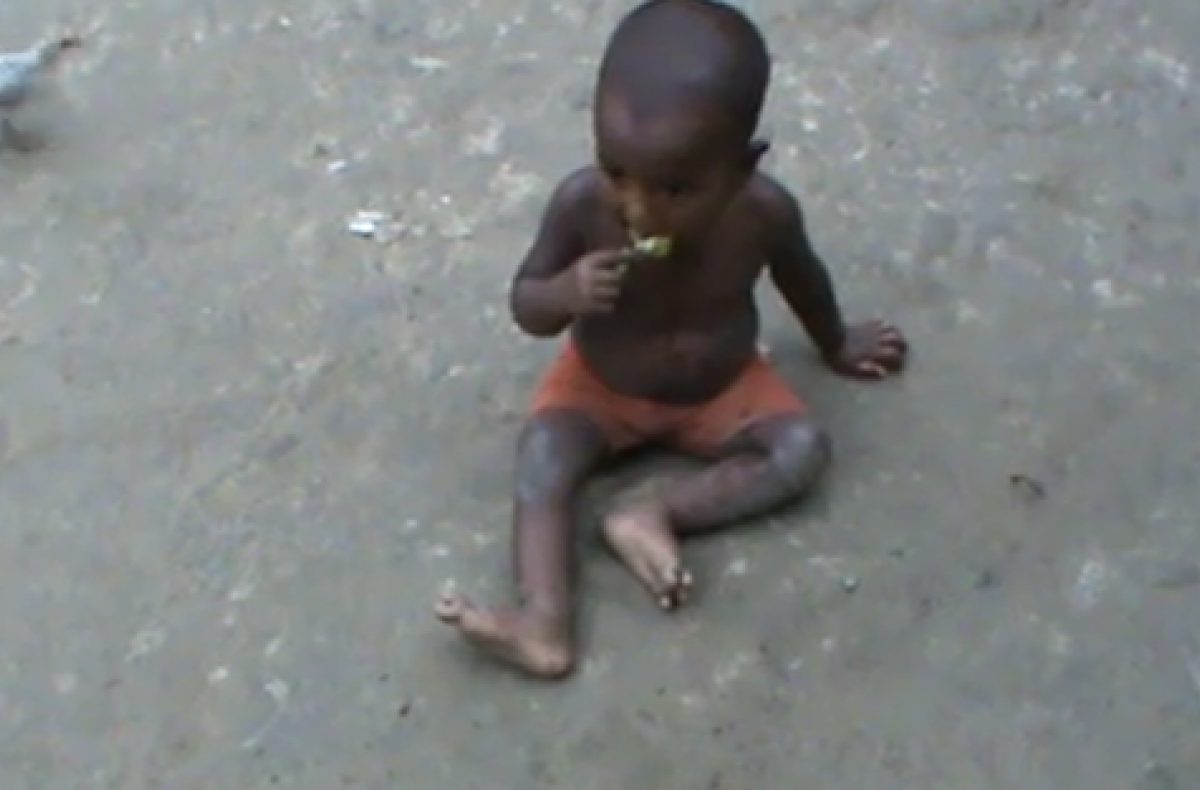Rethinking how to assess disease risk in child behavior
Using U.S. data in assessment models of hand- and object-mouthing likely underestimates rates of exposure to diarrheal disease in low-income countries.
October 6, 2016

Every parent knows it: infants will put just about anything in their mouths. This mode of exploration has obvious drawbacks, one of which is exposure to disease risks. Current methods of quantifying children’s exposure to diarrheal disease – to inform health interventions – may be inaccurate, according to a study led by Laura Kwong, a WHD-affiliated graduate student in Civil and Environmental Engineering.
The paper, published in the International Journal of Environmental Research and Public Health, finds that children of all ages in Bangladesh mouth objects and their hands more frequently than children in the U.S. do. Therefore, the current standard of using hand- and object-mouthing exposure models from the U.S. and other high-income countries may not accurately estimate children’s exposure to environmental contaminants in low- and middle-income countries.
“Accurate estimates of exposure and an understanding of the prominent pathways and sources of exposure allow not only for effectively controlling pathogens, but also for determining maximum safe levels of useful products,” Kwong said. “ For example, without accurate data, estimates may be very conservative and we would derive less than the full benefit from pesticides. Conversely, underestimates of exposure could result in overdoses and adversely impact health, particularly child health.
The U.S. exposure models were developed in response to the Food Quality Protection Act of 1996, which mandates health-based standards for pesticides in food, with special protections for children. In order to determine the risk of multiple pesticides from multiple sources and through multiple pathways, methods were developed to estimate exposure to a single chemical through multiple exposure routes and exposure to multiple stressors. Exposure studies – time-consuming and often expensive – have primarily been conducted in high-income countries due to health-based regulations that require exposure data.
In considering whether a study of locally specific exposure factors should be conducted, it would be worthwhile for risk assessors to consider the relevant child-, household- and community-level characteristics of the local situation, and compare them with the characteristics of children studied previously. For example, risk assessors could consider the range of child ages and location, house floor material and whether or not eating or feeding by hand is common. If the combination of characteristics is very different than that of children that have been previously studied, a location-specific study to determine appropriate exposure factors may be warranted.
Some important characteristics that might affect the frequency of hand and object mouthing are the custom of eating by hand, the use of pacifiers, and the number and attentiveness of caregivers present. In particular, the frequency of mouthing soil and feces is affected by the material of the floor inside the house, the amount vegetation or concrete covering the ground outside, the presence of free-roaming animals and the frequency of animal feces collection.
Kwong looks forward to expanding the research by obtaining higher-quality data through methods such as video observation. Among other advantages, video will allow researchers to evaluate the sources that are the primary determinants of exposure. For example, they can combine the number of times a child puts his hands in his mouth with the amount of food that he eats, the level of contamination on food and hands and the efficiency of transfer of that contamination. This way, researchers can determine if hands or food are responsible for more of the contamination ingested by the child.
Co-authors of “Hand- and Object-Mouthing of Rural Bangladeshi Children 3–18 Months Old” include WHD researchers Amy Pickering, Jenna Davis and Stephen Luby; as well as Ayse Ercumen of the University of California, Berkeley; and Leanne Unicomb of the International Centre for Diarrhoeal Disease Research.
Contact Information
Rob Jordan
Associate Editor, Environment and Sustainability, Woods Institute
rjordan@stanford.edu


